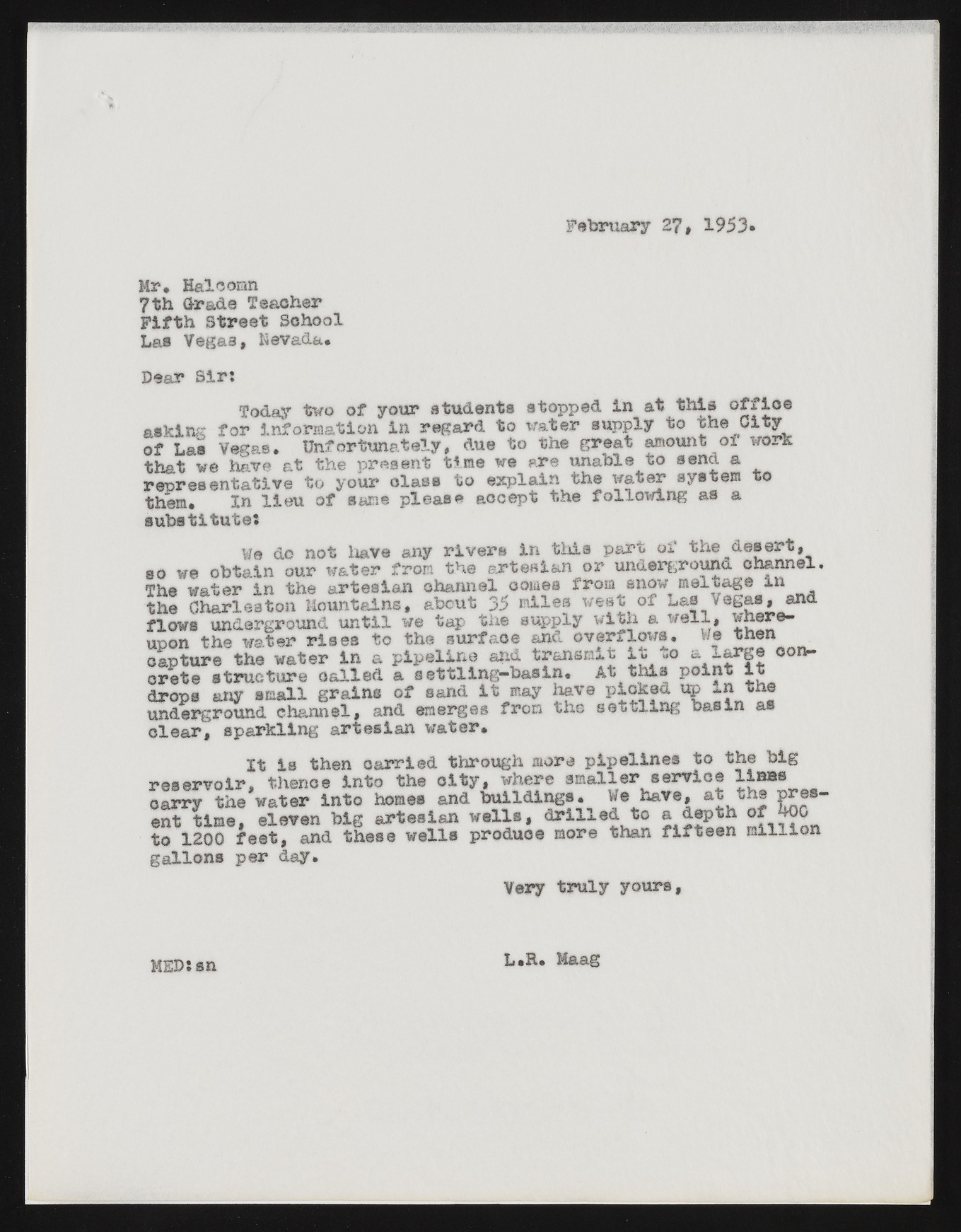Copyright & Fair-use Agreement
UNLV Special Collections provides copies of materials to facilitate private study, scholarship, or research. Material not in the public domain may be used according to fair use of copyrighted materials as defined by copyright law. Please cite us.
Please note that UNLV may not own the copyright to these materials and cannot provide permission to publish or distribute materials when UNLV is not the copyright holder. The user is solely responsible for determining the copyright status of materials and obtaining permission to use material from the copyright holder and for determining whether any permissions relating to any other rights are necessary for the intended use, and for obtaining all required permissions beyond that allowed by fair use.
Read more about our reproduction and use policy.
I agree.Information
Digital ID
Permalink
Details
Member of
More Info
Rights
Digital Provenance
Publisher
Transcription
February 27# 1953* Mr, Halcoen 7th Grade Teacher Fifth Street School Las Vegas# Mevada, Dear Sir: Today two of your students stopped in at this office asking for information in regard to water supply to the City of Las Vegas, Unfortunately, due to the great amount of work that we have at the present time we are unable to send a representative to your class to explain the water system to them. In lieu of same please accept the following as a substitutes We do not have any rivers in this part of the desert, so we obtain our water from the artesian or underground channel. The water in the artesian channel comes from snow meltage in the Charleston Mountains, about 35 miles vest of Las Vegas, and flows underground until we tap the supply with a well, whereupon the water rises to the surface and overflows. We then capture the water in & pipeline and transmit it to a -&rge concrete structure called a settling-basin. At this point it drops any small grains of sand it may have picked up in the underground channel, and emerges from the settling basin as clear, sparkling artesian water. It is then carried through more pipelines to the big reservoir, thence into the city, where smaller service JlgM carry the water into homes and buildings. We have, at the P_es-ent time, eleven big artesian wells, drilled to a depth to 1200 feet, and these wells produce more than fifteen million gallons per day. Very truly yours, MED:sn LaHo Maag

